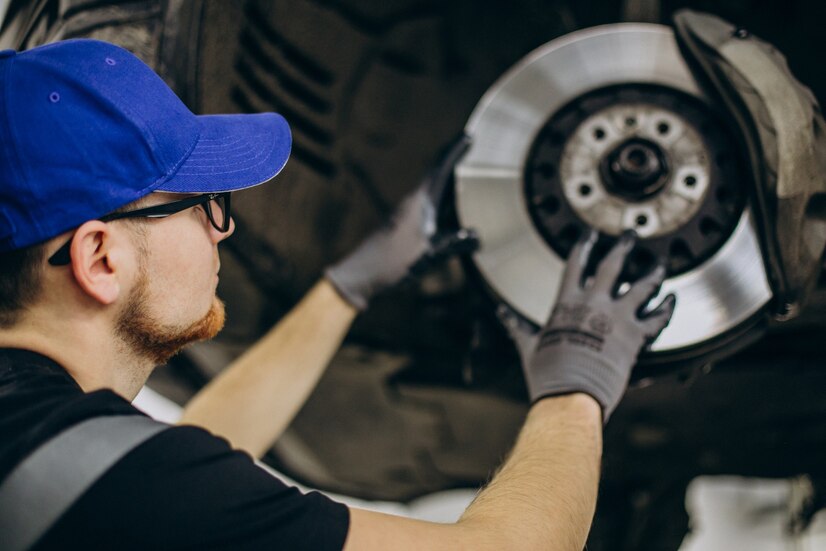
10 Easy Steps to Replacing Your Car Clutch

Replacing a car’s clutch may sound like a daunting task, but with some patience and the right tools, it can be done at home. This guide will walk you through the process in 10 simple steps, ensuring that you can restore smooth operation to your vehicle. While this job is labor-intensive, following the steps below will make it manageable, even for intermediate DIYers.
1. Preparation is Key

Before starting, make sure you have the necessary tools and parts. You will need a car jack, jack stands, a clutch alignment tool, wrenches, and socket sets. Don’t forget to purchase a replacement clutch kit that matches your vehicle model. Also, ensure that you have a safe and level working space.
2. Disconnect the Battery

This is crucial for safety. Disconnect the negative terminal of the battery to avoid any accidental electrical shorts while working. It’s always a good habit to disconnect the battery whenever working on your vehicle, especially around electrical components.
3. Lift the Vehicle

Using your car jack, lift the front of your vehicle and place it securely on jack stands. The clutch is located between the engine and transmission, so you’ll need to access the undercarriage. Double-check that the vehicle is stable before proceeding to the next step.
4. Remove the Transmission

The transmission must be removed to access the clutch. Start by disconnecting any components connected to the transmission, including driveshafts, cables, and linkage. Unbolt the transmission mounts and carefully lower the transmission using a transmission jack or your jack stand. This step may require an extra set of hands due to the weight of the transmission.
5. Access the Clutch Assembly

Once the transmission is out of the way, you will see the clutch assembly mounted to the engine’s flywheel. The clutch assembly consists of a pressure plate, clutch disc, and release bearing. Begin by unbolting the pressure plate from the flywheel. Once this is done, you can remove the clutch disc and release bearing.
6. Inspect the Flywheel

The flywheel is an important part of the clutch system and should be inspected for wear and tear. Look for scoring, cracks, or heat spots. If the flywheel shows any signs of damage, it should be replaced or resurfaced before installing the new clutch.
7. Install the New Clutch

Position the new clutch disc on the flywheel, making sure that it’s aligned properly using a clutch alignment tool. Place the pressure plate over the clutch disc and bolt it onto the flywheel. Tighten the bolts gradually in a crisscross pattern to ensure even pressure. Make sure everything is aligned perfectly before moving to the next step.
8. Replace the Release Bearing

A new clutch kit should include a release bearing, which should be replaced along with the clutch disc and pressure plate. The release bearing is mounted on the transmission input shaft and works in conjunction with the clutch fork. Make sure to properly lubricate the new bearing before installing it.
9. Reinstall the Transmission

With the new clutch in place, it’s time to reinstall the transmission. Carefully lift the transmission back into position and bolt it onto the engine. Reconnect the driveshafts, cables, and linkages that you disconnected earlier. Make sure everything is tight and secure.
10. Test the New Clutch

Once everything is reassembled, lower the car from the jack stands and reconnect the battery. Start the vehicle and test the clutch to ensure smooth operation. Make sure the clutch pedal feels right and that gear changes are smooth without any grinding or slippage.
How Service My Car Assist You?
Looking for a reliable honda pilot battery replacement? Wondering where to find top-notch service? At Service My Car, we’ve got you covered. Our expert technicians ensure your Honda Pilot gets the best care, replacing your battery efficiently and professionally. Don’t let a dead battery slow you down. Trust Service My Car for quick and reliable service. Get back on the road with confidence. Book your Honda Pilot battery replacement today!
Final Thoughts
While replacing a car clutch can seem intimidating, breaking the process down into simple steps makes it more manageable. This guide gives you a clear path to follow, but always consult your vehicle’s manual for any specific instructions related to your model. If at any point you feel unsure or overwhelmed, don’t hesitate to seek professional assistance. After all, ensuring a properly functioning clutch is essential for a safe and smooth driving experience.





Leave Your Comment